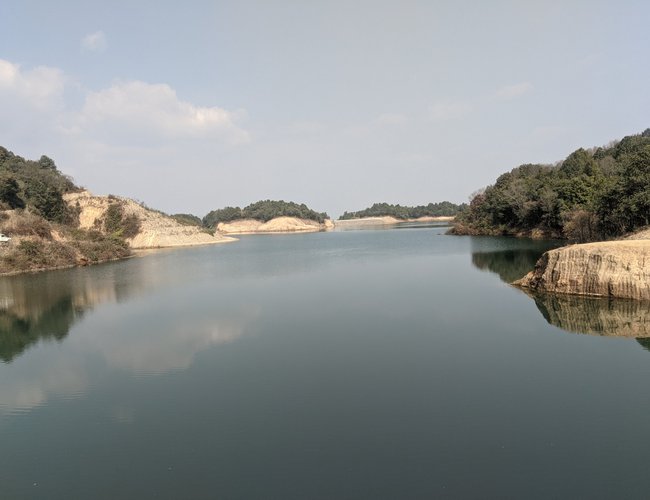
On February 16, the Dhap Project, which would boost the water flow in the Bagmati River, begins operations without receiving extensive media attention or notices from the locals of the Kathmandu Valley.
The Dhap Dam and Storage project, funded by the ADB and built by Nepali engineers and contractors, is the first project that will eventually contribute to augmenting water in Bagmati, paving the way for its revival.
Arnaud Cauchaois, the current Country Director of the Asian Development Bank in Nepal, who was involved in the design phase, expressed hope that the revival of Bagmati is now underway.
"I am extremely happy to see the Dhap Reservoir full of water in front of us, and the beautiful snow peaks in the distance. This truly reflects the natural beauty that adorns your country. And the Asian Development Bank is privileged to be one of the important development partners of the Government of Nepal and Nepali people," expressed country director Arnaud Cauchaois. See Opinion
He has recalled his involvement. “Some of you may know that before I came to Nepal as the country director, I was working in Nepal as a water resources specialist. It was during my time here then that I had the privilege of preparing the Bagmati River Basin Improvement Project, under which this Dhap Dam was built,” said Arnaud Cauchaois
“Looking back, it was in 2009, that the Government of Nepal, concerned with the degrading waterways of the Kathmandu Valley, endorsed the Bagmati Action Plan, adopting a vision of “a clean, green and healthy river system that is full of life and valued by all.”
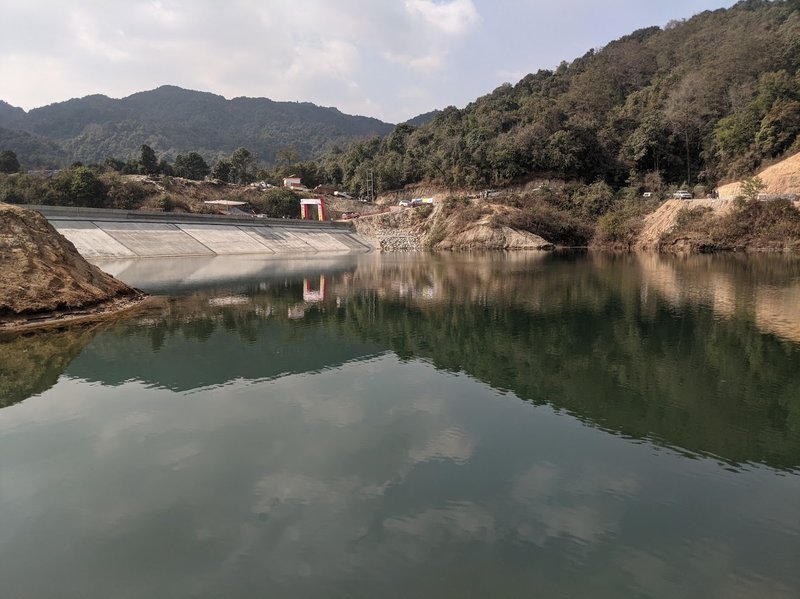
Dhap Dam Project, which is the second major project completed recently to improve the valley's water system after Melamchi, was built by Nepali engineers from the Department of Water Resources and Irrigation.
The statement delivered by ADB's country director Arnaud Cauchaois during the inauguration (February 16) demonstrated how important ADB placed on the Kathmandu Valley's water supply system as well as the revival of its culture and nature of Bagmati.
The amount of water released by the project is minimal. However, the completion of the project raises the prospect of changing the current Bagmati status.
"This project increases our confidence in seeing clean water and the return of aquatic life in the Bagmati River," said Santosh Chalise, a member of the House of Representatives and former mayor of Gokarneshwor Municipality. "Bagmati is a lifeline of this region with greater religious, spiritual and natural importance of this region. As a member of parliament, I will make every effort to begin construction of the Nagmati Dam as soon as possible. The River, where I used to swim, is a spiritual and cultural part of my life. I'd like to thank ADB for its assistance in building the dam."
Former Drinking Water Secretary and Director General of the Department of Irrigation Madhav Belbase, who is now a member of the Public Server Commission, is also looking forward to the project's inauguration. “The amount of water released by the project is minimal. However, the completion of the project raises the prospect of changing the current Bagmati's status.”
Belbase, who touched the reservoir's water as sacred, stated, "I am glad to attend the program to observe materialization of concept framed during our term as civil servants.”
Belbase decided to transfer water from the Melamchi River to the Kathmandu Valley for distribution while serving as secretary of the Ministry of Drinking Water.
A cool-headed Belbase has been defending the necessity of building the Dhap Dam and Nagmati Dam projects to increase the water in Bagmati. Belbase brought TBM to Nepal to dig the tunnel of the Bheri-Babai diversion project.
Belbase vehemently argued that the Department of Irrigation should build the dam even though the project is a component of the Kathmandu Valley Beautification Project of the Ministry of Urban Development. The approval of Cauchaois, who was overseeing the project in Nepal, opened the door for the participation of a company with engineers who have in-depth structural understanding.
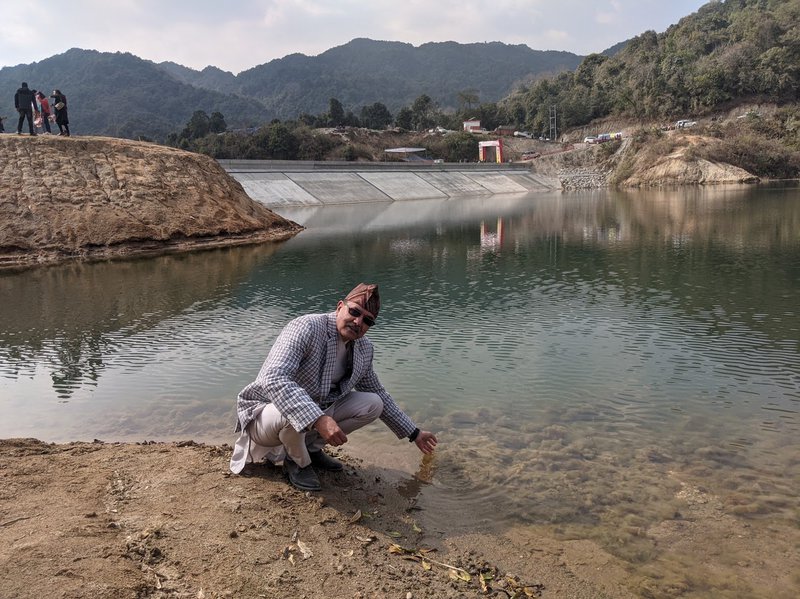
Belbase
Many years ago, Nepalese media and experts have brought up the sad status of the Bagmati River, attributing it to residents of the valley's reckless behavior. They seldom ever discussed the significance of the Dhap and Nagmati dams, which increase the water needed to keep the river clean.
"We must clean the Bagmati River if we are to restore the spiritual and cultural aspects of the Bagmati and give it new vitality. We need enough water for this, which can only be accomplished by storing water at the sources, according to the municipality's mayor, Dipak Risal. The municipality is prepared to begin building on Nagmati in close coordination with the government and ADB.
Everyone is concerned about the Bagmati River, but few individuals have come up with permanent solutions. A consensus must be reached about the construction of the Nagmati dam.
The Bagmati Action Plan, which was created with ADB's assistance, had a lengthy number of measures that were all intended to preserve and restore the river ecology in the valley.
The High-Level Committee for the Integrated Development of the Bagmati Civilisation was already carrying out some of these measures. However, a large number of the planned initiatives had not been put into action due to a lack of funding and human resources.
"ADB had already responded to the government's requests to address the drinking water scarcity in Kathmandu Valley through several ADB-financed projects, one of them being Melamchi Water Supply Project. However, while these projects aimed to address the immediate humanitarian needs for drinking water, a gap remained to address the environmental and cultural priorities of the Holy Bagmati River which has been, and remains attached to the cycle of life of the denizens of this ancient, multi-ethnic and multi-cultural valley," said ADB Country Director.
Bagmati River Basin
The Bagmati River Basin (BRB), which spans around 597 km and drains a watershed area of 678 km2 in the Kathmandu Valley, begins where three headwater streams merge at Baghdwar near Shivapuri, Kathmandu, at an elevation of 2,690 m.
To safeguard the Bagmati River, the government launched the Bagmati River Basin Improvement Project in 2013. The goal of the Dhap Dam project was to improve the river's water resources and water quality while also boosting the nation's economy and citizens' level of living.
ADB is assisting with the project's scaling-up of the consolidation of water management institutions, the growth of riverbank beautifying efforts, the mobilization of the riverine population, and the design, construction, and operation of a wastewater treatment facility (WWTP).
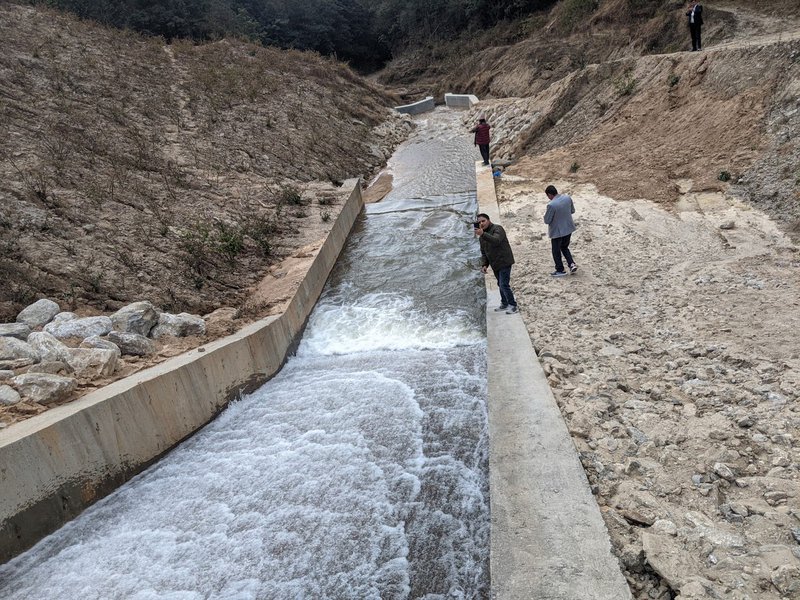
One of Nepal's major basins, the BRB supports a large portion of the nation's economical activities. The Kathmandu Valley, which makes up around 15% of the basin's surface, uses its water extensively for drinking, irrigation, industry, and other uses.
Rivers in the basin have extensive cultural and historical significance. There are various locations in the BRB where rainfall and river discharge observation stations are situated.
Only a small number of people, though, are pushing for a real solution. One cannot stop the urbanization of the Kathmandu Valley given the prevailing trends. Nonetheless, it is possible to clean the river by raising the Bagmati's water level. To do this, two tiny dams must be constructed to store rainfall for later release during the dry season.
The Bagmati River has virtually no water during the dry season due to unplanned and haphazard urbanization that has connected wastewater to the river in large quantities and exploited its water sources for drinking.
All sources of water, even the river's source at the end, have been used by people to make drinking water. The river became an open sewer with dirty water, eliminating the life of the river, instead of having pure water.
Hope for raising the water level in the Bagmati during the dry season was raised with the completion of the Dhap Dam and Reservoir and the release of a limited volume of water to the river. The tiny reservoir, nevertheless, is inadequate. Given the condition of the river, a significantly larger storage project is necessary.
"Now that the reservoir is finished and the water has been released, we are confident in our ability to revive the Bagmati by releasing the water that has been kept there. Susheel Chandra Acharya, Director General of the Department of Irrigation, stated that following the dedication, preparations are currently being made for the construction of the Nagmati Dam. "Department is prepared to assume full technical responsibility for Nagmati construction."
Dhap Reservoir and Dhap Dam
Although they later left their positions as ministers of energy, water resources, and irrigation and minister of urban development, respectively, Rajendra Kumar Lingden and Bikram Pandey indicated support for the construction of the Nagmati Dam.
Asian Development Bank contributed Rs. 890 million for the construction of the dam, which is located inside Shivapuri Nagarjun National Park inward no. 1 of Gokrneshwor Municipality.
"This is the first Concrete Face Rock File Dam (CFRD) type dam built in Nepal. The dam, which is located 2090 meters above sea level, is 17 kilometers from Sundarijal and 34 kilometers from Tribhuwan International Airport, according to unit chief Krishna Prasad Rijal.
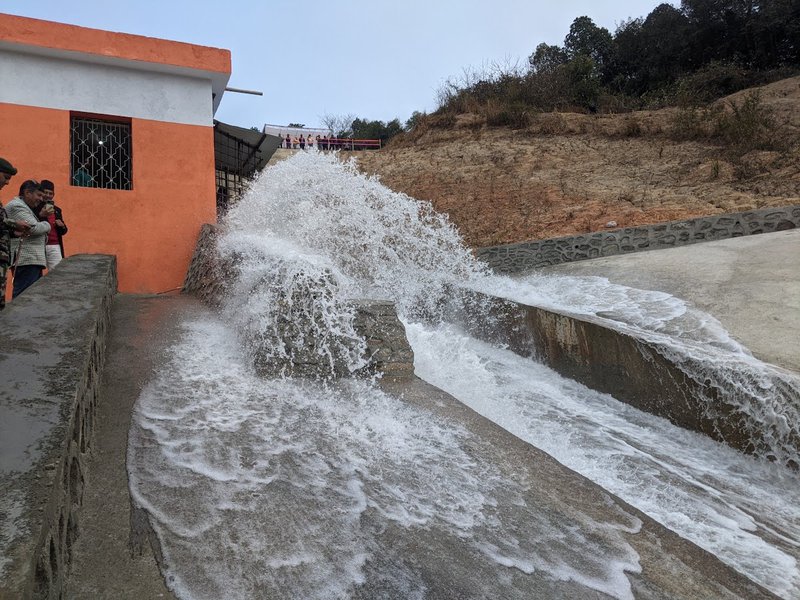
"The volume of water in the Bamati River is a problem. River status is determined by water discharges. The release of 400 liters per second from the Dhap Dam will have little impact. However, this paves the way for the construction of Nagmati "said Shishir Koirala, joint secretary at the Ministry of Energy, Water Resources, and Irrigation.
A Dhap Dam Feature
The dam's height is 24 meters (DSTople Spilling Crest level). The dam's top length is 175 meters, and its crest width is 8 meters. Similarly, the maximum bottom width is 100 meters, and the number of the main dam 1 and saddle dam 3 is
The dam has a 1.2 MCM capacity, and the reservoir is 12 hectares in size. The dam will increase the Bagmati River's dry season flow by allowing it to flow up to 400 liters per second during celebrations like Shiva Ratri.
With a projected project cost of Rs. 590 million and an actual disperse cost of Rs. 491 million, it was built by Nepalese contractor Raman JV. The dam is located in Gokarneshwor Municipality Ward 1 and is 34 kilometers from TIA and 18 kilometers from Sundarijal. The dam is a concrete face rockfill dam and is located at 2090 meters (CFRD).
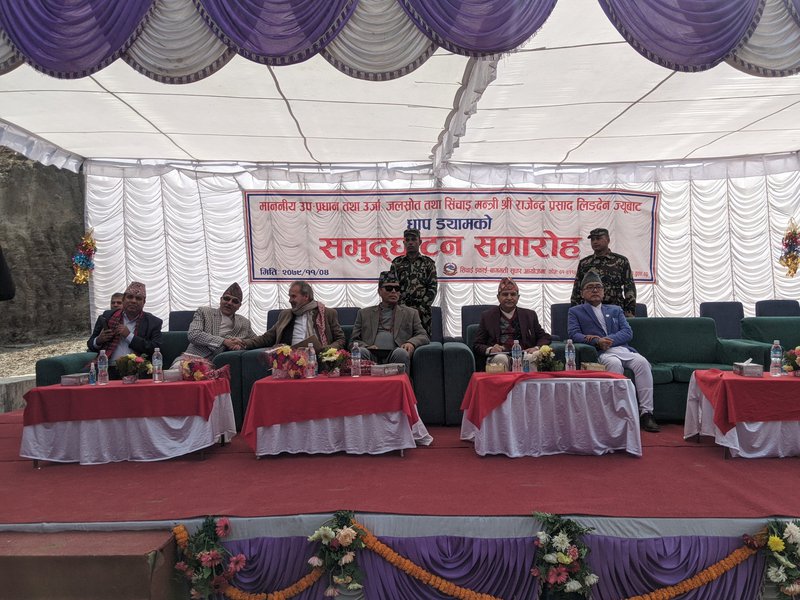
The dam will boost the seasonal flow of the Bagmati River, according to Rijal, with a reservoir capacity of 1.2 MCM and an expanded area of 12 hectares.
The reservoir, according to Uddav Timilsina, Executive Chairman of the High Powered Committee for Integrated Development of the Bagmati Civilisation (HPCIDBC), is crucial to boosting water flow and fostering recreational activities inside the National Park.
A lengthy list of initiatives that jointly sought to preserve and restore the river ecology in the valley was offered by the Bagmati Action Plan. The High-Level Committee for the Integrated Development of the Bagmati Civilisation was already carrying out some of these measures. However, a large number of the planned initiatives had not been put into action due to a lack of funding and human resources.
Coordinated Interministerial Action
Constructed by a Nepali contractor, the project has demonstrated how many ministries can collaborate to finish the job on schedule. Although the Ministry of Urban Development is responsible for the project, the Ministry of Energy, Water Resources, and Irrigation was given the job of building the dam.
Most critically, the construction assignment was performed with excellent ministerial cooperation. "During the period of construction, we learned numerous useful lessons. The Secretary of the Ministry of Urban Development added, "We can continue this paradigm in the future as well.
"Collaboration is still needed to complete the construction of the Nagmati Dam. Similarly, in order to accomplish our goal of cleaning the Bagmati, we also require the assistance of the Ministry of Drinking Water, said Acharya.
To clean the Bagmati River, there needs to be greater collaboration between provincial, federal, and local governments, according to Acharya.
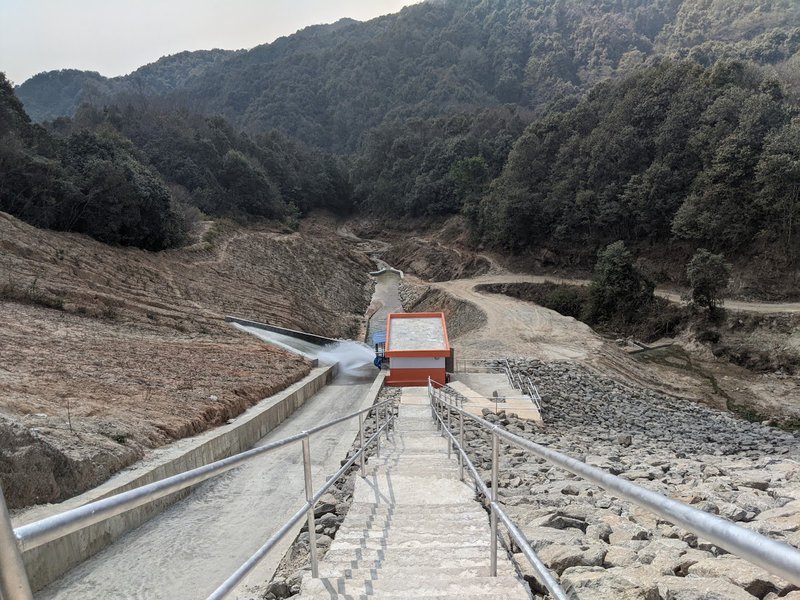
Nagmati Is On the Pipeline
Even though it was suggested approximately 20 years ago to construct Dhap Dam and Nagmati Dam to store rainwater and discharge it during the dry season. The Dhap Dam has finally been finished and has begun to release water to the river after many years of conflicts and delays. But, the Ministry of Forest and Environment is currently awaiting approval for the Environmental Impact Assessment before moving on with the Nagmati Dam project (EIA).
While everyone in the valley has been emphasizing the need to clean up the Bagmati to restore its value to the environment, spirituality, culture, and civilization, a small group is causing obstacles. Municipal administrations want to start building the dam as soon as feasible, locals. Building a reservoir, which will eventually help the local government create resources as well, is not harmful, according to Mayor Risal
The construction of small-scale reservoirs is particularly important given the condition of the river. "I would like to emphasize again that the purpose of Dhap Dam was to augment the environmental flow of the Bagmati River and to serve the cultural value of Bagmati within the Kathmandu Valley. If the water of this dam is not diverted to the Bagmati River, the intended purpose of the Dhap Dam will not be achieved. There is a need for the key stakeholders to discuss among themselves and agree on an amicable way forward, particularly on the allocation of water, especially when Nagmati Dam will be constructed. While doing so, I would like to request the key stakeholders to consider Bagmati River, its users, and denizens of the Kathmandu Valley," said the ADB Country director.
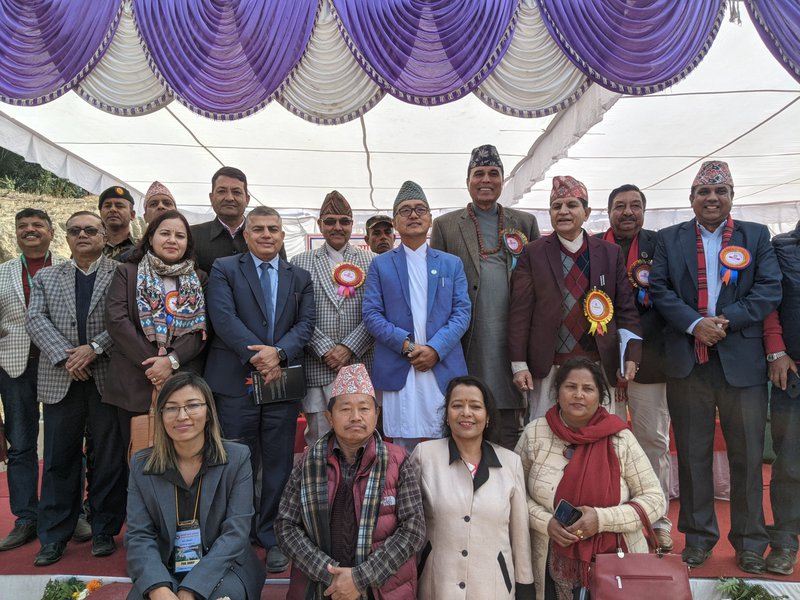
Belbase has been promoting the clean Bagmati and building the two dams throughout his career, which has been spent primarily on irrigation-related projects involving water resources management.
Belbase was present when DPM Lingden, at the time, officially opened the Dhap Dam and released the Bamati's reservoir of water. The building of the Dhap Dam is a significant accomplishment, despite being only a tiny thing.
Belbase declared, "This is a beginning step to clean the Bagmati and watch the resurrection of Nepal's spiritual and civilization.
I'm glad to see that an idea that was pursued 15 years ago has finally been realized.
The Bagmati River, which supplies the Kathmandu Valley with water, can be cleaned by more water discharge from the dams.
When the river is currently nothing more than a sewerage, adding 40 cubic centimeters of water per second won't be able to entirely improve its condition. However, the Dhap Dam's completion opens the way for the construction of the somewhat bigger Nagmati Dam, which will significantly improve the Bagmati's ability to be cleaned.
"During the dry season, more water needs to be released in order to clean the Bagmati. Nagmati and Dhap are the only options for this, according to Belbase. "Nagmati Dam building will also begin soon."
The idea for the Dhap Dam was born out of the need to revitalize the Bagmati River. To increase the Bagmati River's natural flow, Dhap Dam would retain water during the monsoon and discharge it during the dry season. Together with this, the project included a part to turn the river corridor into a green belt and give the people of Kathmandu a place to relax.
Together with rainwater collection to replenish Kathmandu's groundwater and societal mobilization for solid waste management, the project also tested watershed management interventions in the Shivapuri Nagarjun National Park to lessen pressure on the Bagmati.
This heralds the start of other pipelined projects, such as the construction of the Nagmati Dam, which would bring 440 liters per second more of water to the Bagmati River during the dry season.

Keshab Poudel
Poudel is the editor of New Spotlight Magazine.
- FOURTH PROFESSOR Y.N. KHANAL LECTURE: Nepal-China Relations
- Jun 23, 2025
- Colonel JP CROSS: Centenary Birthday
- Jun 23, 2025
- REEEP-GREEN: Empowering Communities with MEP
- Jun 16, 2025
- BEEN: Retrofitted For Green
- May 28, 2025
- GGGI has been promoting green growth in Nepal for a decade: Dr. Malle Fofana
- May 21, 2025















